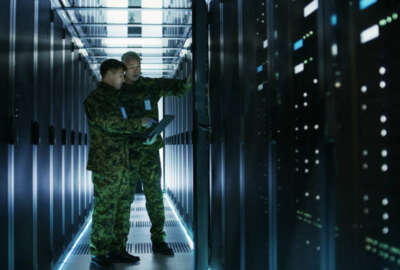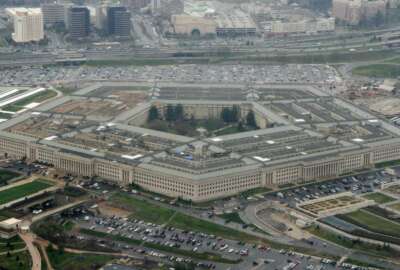
Army upgrading networks in hopes of creating a super weapons system in the future
The upgrades will help the Army with its Project Convergence program, which mixes AI decision-making with soldier lethality.
The Army is now fielding its newest round of network technologies and beginning a design review for the next iteration updates in 2023 as the service continues to connect its weapons systems to create an all-encompassing web of sensors and decision-making tools.
The Army’s continuous network modernization plan updates the service’s networking tools every two years into what are called capability sets. Each set builds upon the previous one. The Army said they will establish the foundation for developers to address emerging threats and integrate commercial technologies into existing programs of record.
“We’ve recently conducted an operational test of the radio systems, and there is an ongoing force-on-force combat training center rotation. Many of those systems are being fielded today to our maneuver formations, and also to our expeditionary signal attires,” said Maj. Gen. Peter Gallagher, director of the Army Futures Command network cross-functional team, during a Tuesday Association of the United States Army event. “We’re on the cusp of a preliminary design review for our Capability Set 23 over the course of the next month. Then we’re going to continue prototyping over the next year-and-a-half to really refine and converge on an approach for what Capability Set 23 will look like.”
Gallagher described the Capability Set 21 upgrades — going on now —as expeditionary and intuitive, but said there is more the Army can do to simplify network operations and better power consumption. A major component of Set 21 was the Integrated Tactical Network (ITN). An Army press release states that the ITN injects new commercial components and network transport capabilities into the Army’s tactical network environment to provide maneuver brigades and below with smaller, lighter, faster and more flexible communications systems.
“We are looking to be much more resilient in our network backbone and have much better capacity in our in our transport,” he said. “We want to converge a lot of these legacy systems into a common data fabric and really accelerate the speed of decision making by integrating sensors, leveraging cloud and edge computing optimization. We want to ensure that we’ve got the data and the applications and the ability to integrate shooters or effects at speed.”
The upgrades will help the Army with its Project Convergence program, which mixes artificial intelligence and robotics with the services “big six” modernization priorities: Long range precision fires, next generation combat vehicles, future vertical lift, network, air and missile defense, and soldier lethality. The goal is to make the Army a “multi-domain” force by 2035.
“Next generation combat vehicles and manned and unmanned platforms have to be interconnected with a network that allows them to leverage things like artificial intelligence algorithms. Those optimize aided target recognition through a platform called Firestorm that picks the best shooter and allows those platforms to put steel on target,” Gallagher said by way of example.
Another example allows future vertical lift to sense targets and conduct battle damage assessment during a mission.
The Army is now taking the lessons it learned last year from Project Convergence and putting them toward creating multi-service and multinational capabilities.
That will fit Project Convergence’s goal in with the Pentagon’s larger effort of creating Joint All-Domain Command and Control (JADC2) — the military’s attempt at an all-seeing eye for warfare that will incorporate artificial intelligence and real-time knowledge to make decisions and facilitate attacks.
The Army Combat Capabilities Development Command (CCDC) has a Joint Systems Integration Laboratory at Aberdeen Proving Grounds in Maryland, which connects Army experimentation with joint service technology.
“The lab provides the ability to assess joint system interoperability, as well as network conditions required to support center-to-shooter and the sensor-to-shooter vision,” said Michael Monteleone III, director of the space and terrestrial communications directorate at CCDC. “Attention right now is focused squarely on Project Convergence for 2021, and we will conduct key joint communications exercise starting here in early April.”
Later this year the lab will expand capability to include integrated participation with coalition and joint partner capabilities with data sharing and situation awareness.
“We fully recognize that establishing a federated a common data fabric is really a focus area for the Army,” said Brig. Gen. Robert Collins, Army program executive office for command, control and communications –tactical. “We need to have a resilient network that has seamless exchange of data.”
Collins said the Army is looking at metadata tagging and other ways to standardize data within the larger fabric.
Copyright © 2025 Federal News Network. All rights reserved. This website is not intended for users located within the European Economic Area.
Scott Maucione is a defense reporter for Federal News Network and reports on human capital, workforce and the Defense Department at-large.
Follow @smaucioneWFED





